Design Pattern 9: Prototype Pattern - Efficient Object Cloning for Resource Management and Performance Optimization
Download the complete Design Pattern series code from the design_pattern repo.
Introduction: The Power of Object Cloning
The Prototype Pattern is a creational design pattern that allows you to create new objects by cloning existing ones, avoiding the overhead of creating objects from scratch. This pattern is particularly useful when object creation is expensive or when you need to create objects with similar initial states.
Real-World Applications
The Prototype Pattern is widely used in:
- Graphics Applications: Cloning shapes, sprites, and UI elements
- Game Development: Creating multiple instances of game objects
- Document Editors: Copying and pasting complex objects
- Configuration Management: Creating variations of configuration objects
- Database Operations: Cloning data transfer objects (DTOs)
Case Study: Music Light Show App
This pattern reminds me of a music light show editing app I developed. The app allows users to create complex light sequences, and users often need to copy and paste light patterns to save time.
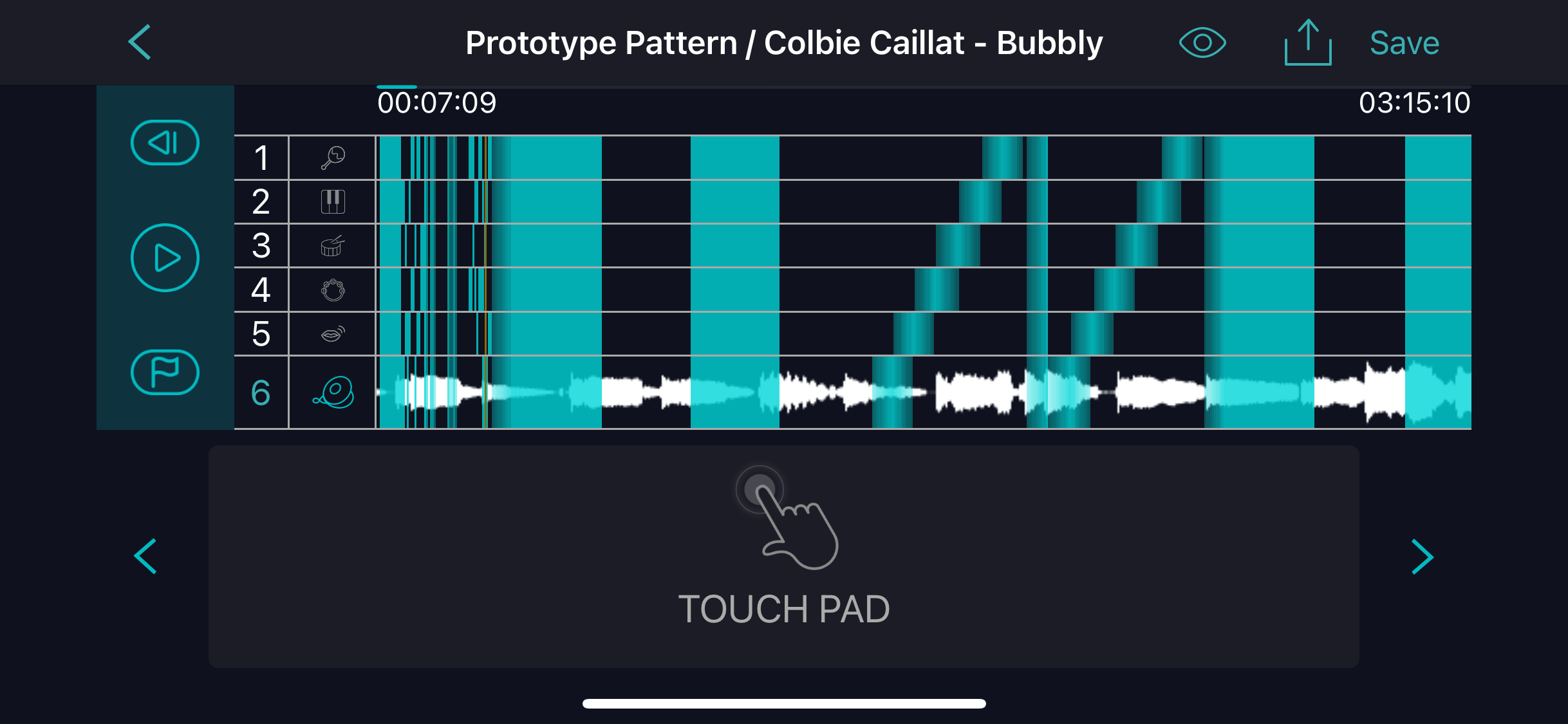
Problem Statement: Copy & Paste Functionality
Users requested a copy & paste feature to avoid recreating similar light patterns from scratch:
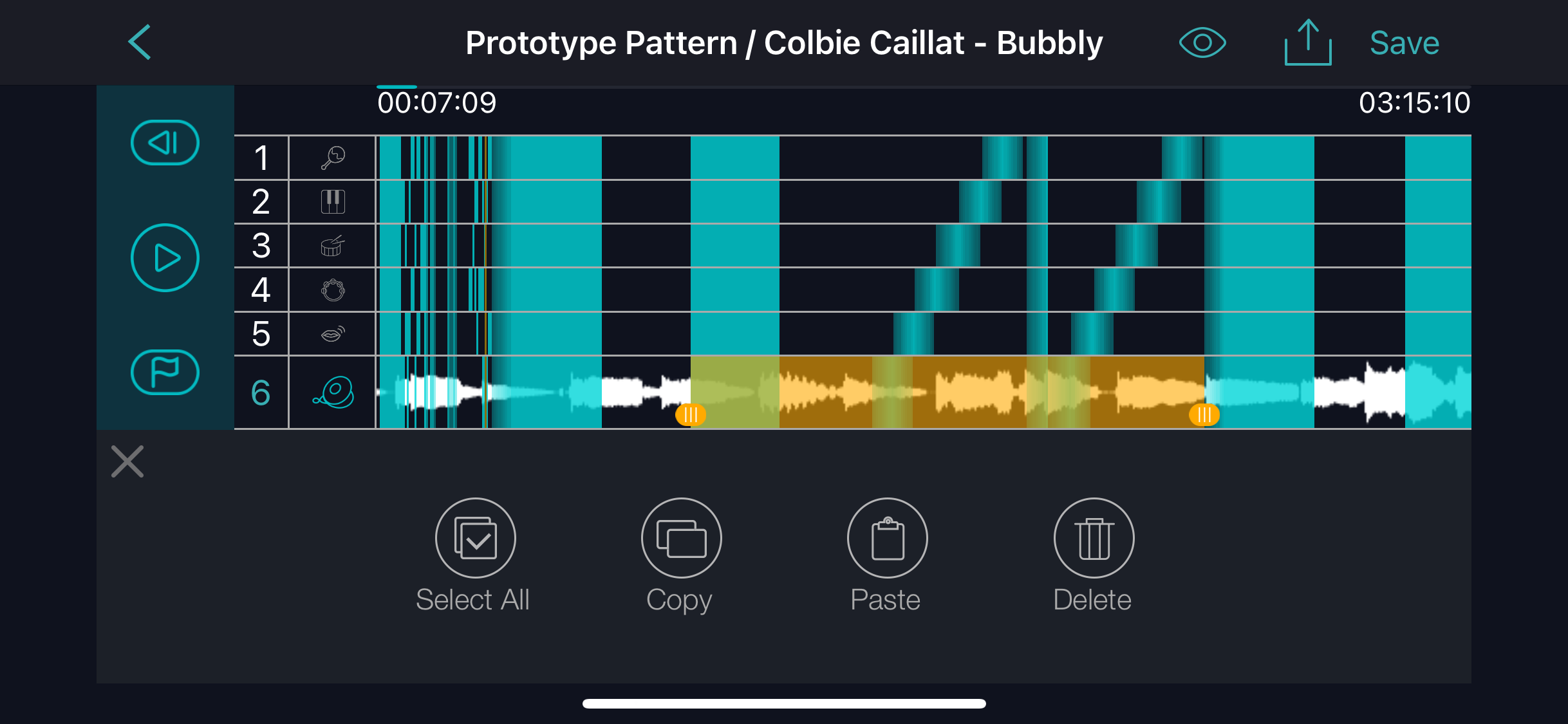
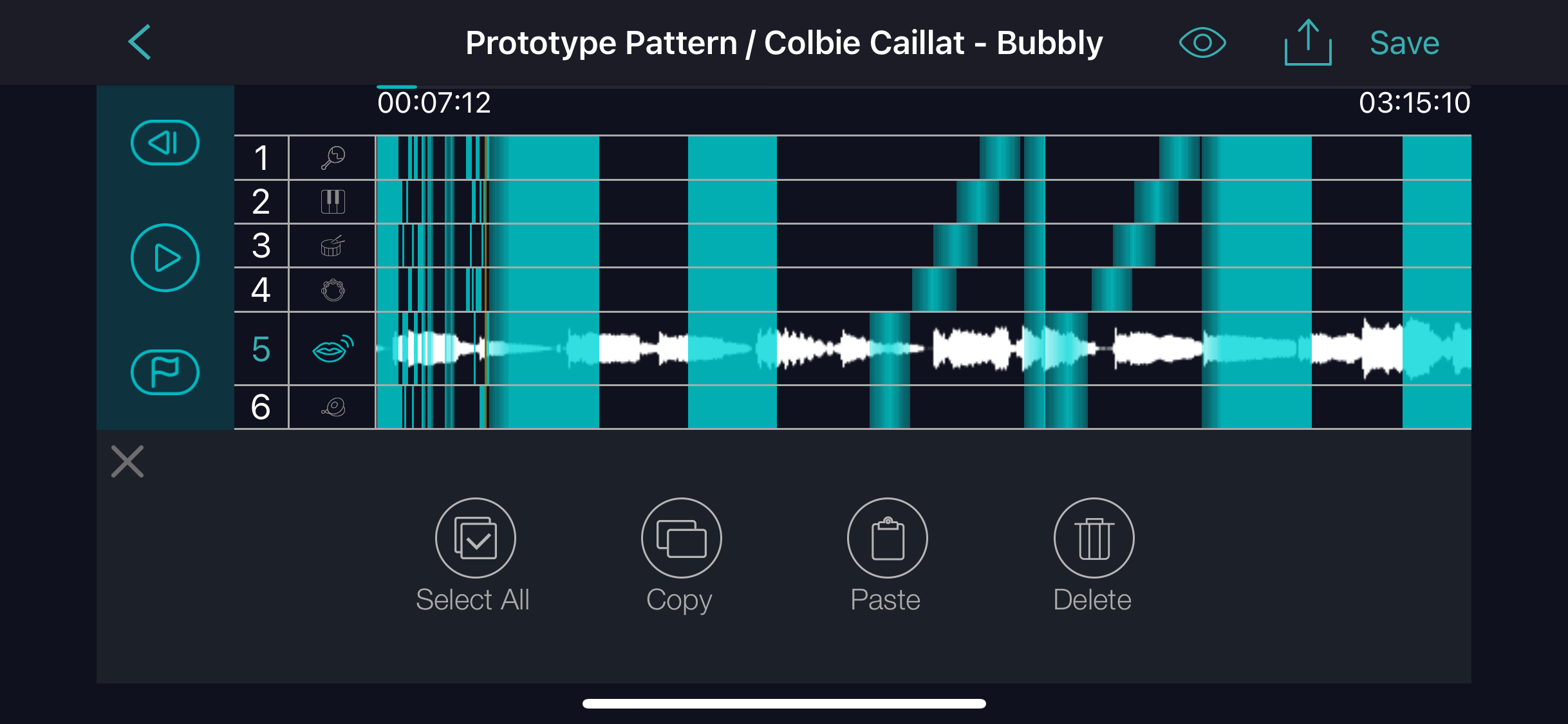
Object-Oriented Analysis (OOA)
Let’s analyze the requirements and design our initial solution:
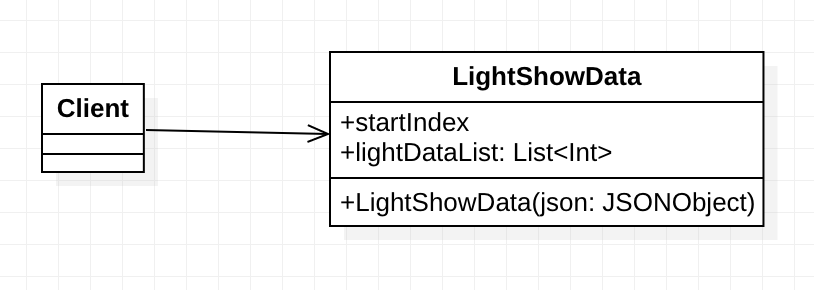
When we need to copy LightShowData, we can simply create a new instance with the same JSON data.
Identifying Design Forces
Without the Prototype Pattern, we encounter several challenges:
- Complex Constructors: If constructors have many parameters, creating new instances requires detailed knowledge
- Performance Overhead: If object creation involves expensive computations, recreating objects becomes inefficient
- State Management: Ensuring copied objects have the same state as originals can be complex
- Memory Usage: Creating objects from scratch may involve unnecessary resource allocation
Applying Prototype Pattern Solution
The Prototype Pattern provides an elegant solution by allowing objects to clone themselves.
Prototype Pattern UML Structure
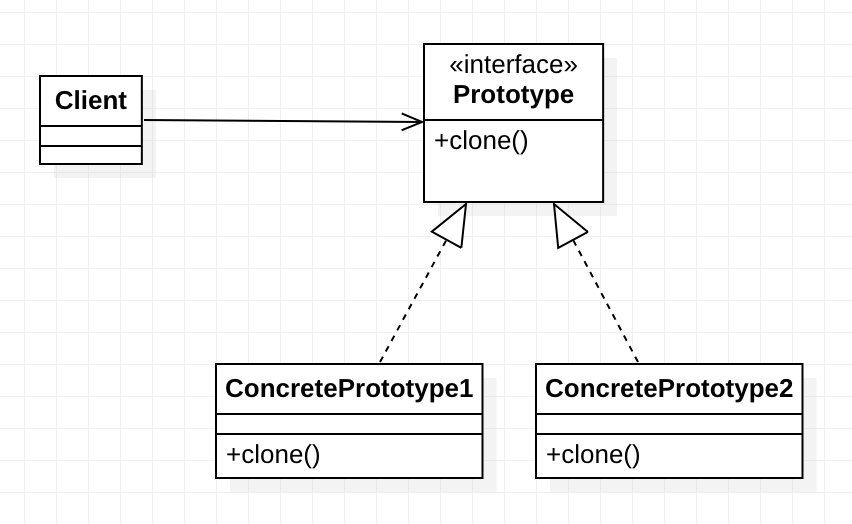
Key Components:
- Prototype: Abstract interface defining the clone method
- Concrete Prototype: Implements the clone method to create exact copies
Applied to Light Show App
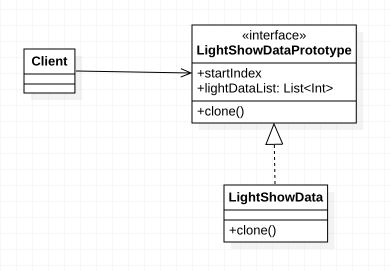
Implementation: Object-Oriented Programming (OOP)
Prototype Interface
interface LightShowDataPrototype {
val startIndex: Int
val lightDataList: List<Int>
fun clone(): LightShowDataPrototype
}
Concrete Prototype Implementation
class LightShowData: LightShowDataPrototype {
override val startIndex: Int
override val lightDataList: List<Int>
constructor(originalDataList: List<Int>) {
startIndex = originalDataList[0]
lightDataList = originalDataList.subList(1, originalDataList.size).map { it * 2 }
}
constructor(startIndex: Int, lightDataList: List<Int>) {
this.startIndex = startIndex
this.lightDataList = lightDataList
}
override fun clone(): LightShowDataPrototype {
return LightShowData(startIndex, lightDataList.toList())
}
}
Client Usage
fun main() {
val originalData = listOf(1, 2, 3, 4, 5)
// Before using prototype pattern - expensive recreation
val originalLightShowData: LightShowDataPrototype = LightShowData(originalData)
val newLightShowData: LightShowDataPrototype = LightShowData(originalData)
println("Original: $originalLightShowData")
println("New (expensive): $newLightShowData")
// After using prototype pattern - efficient cloning
val clonedLightShowData: LightShowDataPrototype = originalLightShowData.clone()
println("Original: $originalLightShowData")
println("Cloned (efficient): $clonedLightShowData")
}
By using the clone() method, we avoid repeating the expensive computation:
originalDataList.subList(1, originalDataList.size).map { it * 2 }
Advanced Implementation: Deep vs Shallow Copy
Shallow Copy Implementation
class UserProfile: Cloneable {
var name: String = ""
var email: String = ""
var preferences: MutableList<String> = mutableListOf()
public override fun clone(): UserProfile {
return super.clone() as UserProfile
}
}
Deep Copy Implementation
class UserProfile: Cloneable {
var name: String = ""
var email: String = ""
var preferences: MutableList<String> = mutableListOf()
public override fun clone(): UserProfile {
val cloned = super.clone() as UserProfile
cloned.preferences = preferences.toMutableList() // Deep copy of list
return cloned
}
}
Real-World Example: Graphics System
abstract class Shape: Cloneable {
var color: String = "black"
var x: Int = 0
var y: Int = 0
abstract fun draw()
public override fun clone(): Shape {
return super.clone() as Shape
}
}
class Circle: Shape() {
var radius: Int = 10
override fun draw() {
println("Drawing circle at ($x, $y) with radius $radius and color $color")
}
override fun clone(): Circle {
val cloned = super.clone() as Circle
cloned.radius = this.radius
return cloned
}
}
class Rectangle: Shape() {
var width: Int = 20
var height: Int = 15
override fun draw() {
println("Drawing rectangle at ($x, $y) with size ${width}x${height} and color $color")
}
override fun clone(): Rectangle {
val cloned = super.clone() as Rectangle
cloned.width = this.width
cloned.height = this.height
return cloned
}
}
Best Practices and Considerations
1. Clone Method Implementation
// Good: Proper clone implementation
class ComplexObject: Cloneable {
private var data: MutableList<String> = mutableListOf()
private var metadata: Map<String, Any> = mapOf()
public override fun clone(): ComplexObject {
val cloned = super.clone() as ComplexObject
cloned.data = data.toMutableList() // Deep copy
cloned.metadata = metadata.toMap() // Deep copy
return cloned
}
}
// Avoid: Incomplete cloning
class BadClone: Cloneable {
private var data: MutableList<String> = mutableListOf()
public override fun clone(): BadClone {
return super.clone() as BadClone // Shallow copy of mutable list!
}
}
2. Prototype Registry
class PrototypeRegistry {
private val prototypes = mutableMapOf<String, Cloneable>()
fun addPrototype(name: String, prototype: Cloneable) {
prototypes[name] = prototype
}
fun getClone(name: String): Cloneable? {
return prototypes[name]?.let { it.clone() }
}
}
// Usage
val registry = PrototypeRegistry()
registry.addPrototype("default-user", UserProfile())
val newUser = registry.getClone("default-user") as UserProfile
3. Performance Optimization
class ExpensiveObject: Cloneable {
private var computedValue: String? = null
private fun computeExpensiveValue(): String {
// Expensive computation
return "computed result"
}
fun getValue(): String {
if (computedValue == null) {
computedValue = computeExpensiveValue()
}
return computedValue!!
}
public override fun clone(): ExpensiveObject {
val cloned = super.clone() as ExpensiveObject
cloned.computedValue = this.computedValue // Preserve computed value
return cloned
}
}
Performance Comparison
| Approach | Memory Usage | Performance | Complexity |
|---|---|---|---|
| New Constructor | High | Low | High |
| Prototype Clone | Low | High | Low |
| Factory Method | Medium | Medium | Medium |
Related Design Patterns
- Factory Method: Creates objects without specifying exact classes
- Abstract Factory: Creates families of related objects
- Builder: Constructs complex objects step by step
- Singleton: Ensures only one instance exists
Conclusion
The Prototype Pattern provides an efficient way to create object copies while avoiding the overhead of object creation from scratch. Key benefits include:
- Performance Improvement: Avoids expensive object creation processes
- Simplified Object Creation: Reduces complexity of object instantiation
- State Preservation: Ensures copied objects maintain the same state
- Memory Efficiency: Reduces resource allocation overhead
This pattern is particularly valuable in scenarios where object creation is expensive or when you need to create multiple similar objects efficiently.
Related Articles
Enjoy Reading This Article?
Here are some more articles you might like to read next: